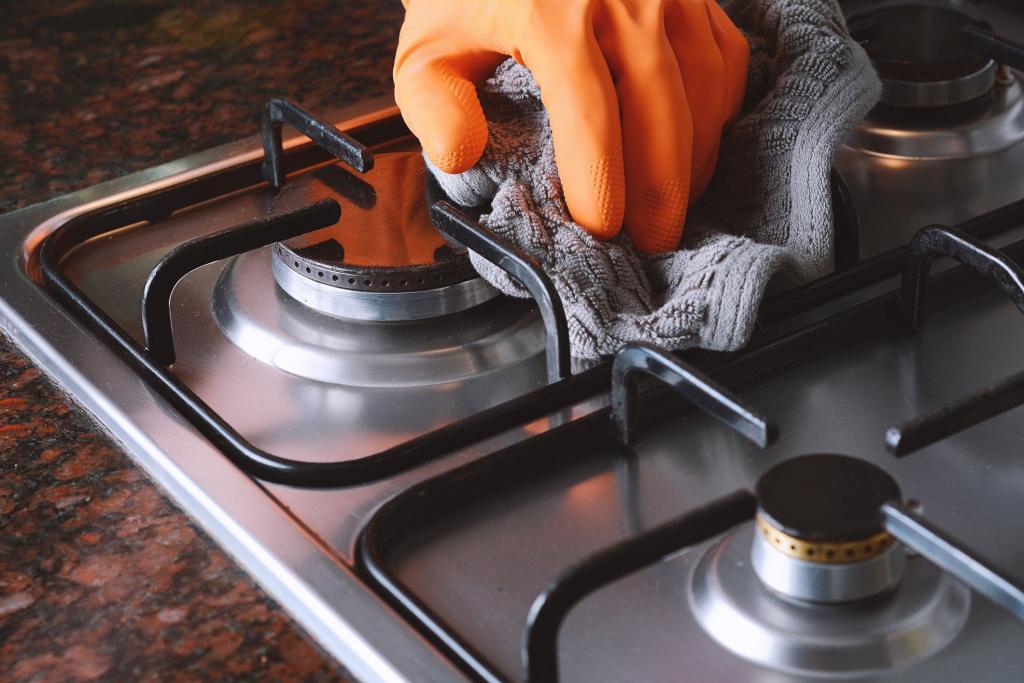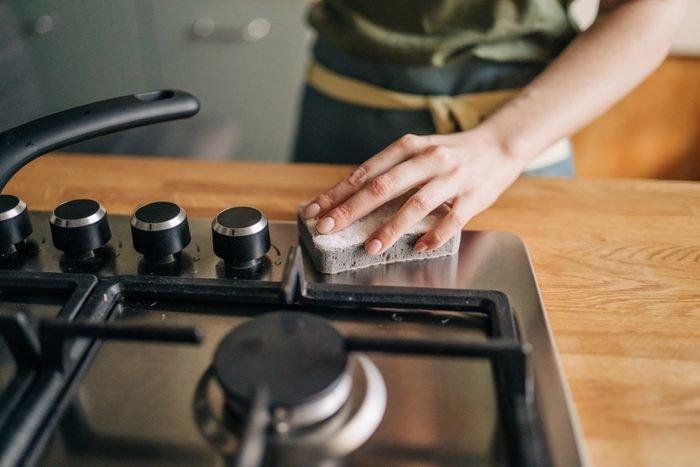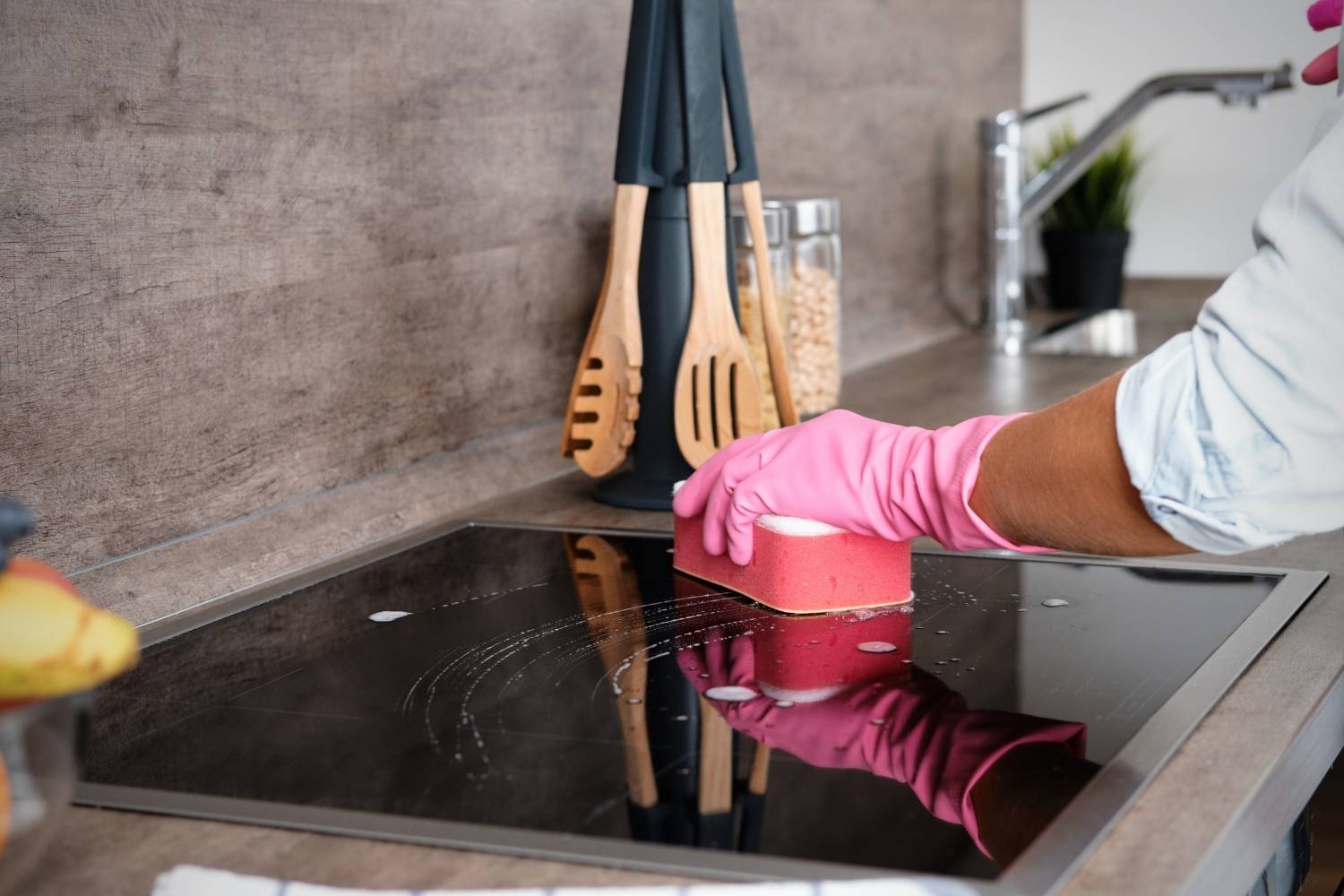Cleaning Tips for Stainless Steel Stove: A Comprehensive Guide
I. Introduction

Stainless steel stoves have become increasingly popular in modern kitchens due to their sleek and contemporary appearance. These stoves are not only aesthetically pleasing but also offer numerous benefits such as durability, heat resistance, and corrosion resistance. However, in order to maintain their pristine look and functionality, regular cleaning and maintenance are essential.
Importance of Regular Cleaning and Maintenance Regular cleaning and maintenance of stainless steel stoves are crucial for several reasons. Firstly, keeping these stoves clean ensures optimal performance and longevity. Built-up grease, food residue, and other contaminants can affect the stove’s heat distribution and overall efficiency. Moreover, neglecting regular cleaning can lead to permanent stains, discoloration, and corrosion on the stainless steel surface.
Secondly, maintaining a clean stove is essential for food safety and hygiene. Stainless steel stoves are commonly used for cooking, and any leftover food particles or spills can become breeding grounds for bacteria and germs. Regular cleaning helps in preventing the growth of harmful microorganisms and ensures that your cooking environment remains clean and safe.
Lastly, regular cleaning and maintenance contribute to the overall appearance of your kitchen. A clean and well-maintained stainless steel stove adds elegance and sophistication to the space, making it more inviting and attractive.
II. Understanding Stainless Steel Stoves
A. Introduction to Stainless Steel

Stoves Stainless steel stoves are made from a combination of iron, chromium, and other alloying elements. This composition gives them their distinctive shine and resistance to corrosion. They are widely favored in both residential and commercial kitchens due to their durability and modern aesthetics. Stainless steel stoves are available in various styles and sizes, catering to different cooking needs and kitchen designs.
Explanation of Their Popularity and Benefits There are several reasons why stainless steel stoves have gained popularity among homeowners and chefs alike. Firstly, stainless steel is known for its durability. It is resistant to rust, stains, and corrosion, making it a long-lasting option for kitchen appliances. Stainless steel stoves can withstand high temperatures, frequent use, and exposure to moisture without losing their integrity.
Additionally, stainless steel stoves are easy to clean and maintain compared to other materials. Their smooth surfaces prevent dirt and grime from sticking, making it easier to wipe away spills and stains. Unlike stoves with porcelain or enamel finishes, stainless steel surfaces do not chip or peel, eliminating the need for touch-ups or repairs.
Furthermore, stainless steel stoves are highly versatile and can complement various kitchen styles and color schemes. Their neutral and reflective surfaces seamlessly blend with existing appliances and décor. This adaptability allows homeowners to change their kitchen design without worrying about compatibility issues.
Common Challenges in Cleaning Stainless Steel Surfaces Despite their many benefits, stainless steel surfaces can be challenging to clean if not done correctly. One common issue is the appearance of streaks and water spots after cleaning. This is often due to using the wrong cleaning products or improperly drying the surface. Another challenge is the occurrence of scratches or scuffs if abrasive materials or cleaning tools are used.
B. Choosing the Right Cleaning Products

Importance of Using Non-Abrasive Cleaners When cleaning stainless steel stoves, it is crucial to use non-abrasive cleaners. Abrasive materials such as steel wool or rough scrub brushes can scratch the surface and damage the stainless steel finish. Instead, opt for soft cloths, microfiber towels, or non-abrasive sponges.
There are several commercial stainless steel cleaners available in the market that are specifically formulated for stainless steel surfaces. These cleaners are typically gentle and effective in removing stains, fingerprints, and grease. Always ensure to read the manufacturer’s instructions and test the cleaner on a small, inconspicuous area before using it on the entire surface.
Avoiding Harsh Chemicals that Could Damage Stainless Steel While stainless steel is generally resistant to corrosion and stains, it is still susceptible to damage from certain harsh chemicals. Avoid using bleach, ammonia, or acidic cleaners as they can cause discoloration, pitting, or etching on the stainless steel surface. Instead, opt for mild cleaning solutions such as water and mild dish soap or vinegar mixed with water.
It is important to note that different stainless steel finishes may require specific cleaning methods and products. For instance, brushed or satin finishes may require different care compared to polished or mirrored finishes. Always refer to the manufacturer’s guidelines for specific cleaning recommendations based on your stove’s finish.
III. Cleaning Techniques for Stainless Steel Stoves
A. Preparing the Stove Surface

Before starting the cleaning process, it is important to prepare the stove surface properly. This involves removing any loose debris or food particles that may be present. Use a soft cloth or brush to gently sweep away crumbs and other debris. Pay close attention to the burner grates, knobs, and inside of the oven as these areas tend to accumulate the most dirt.
Additionally, identify any stubborn stains or spills that may require extra attention. These can include burnt-on food, grease splatters, or water stains. Take note of these areas as they will need to be addressed separately during the cleaning process.
B. Regular Cleaning Routine
For regular cleaning of stainless steel stoves, a simple routine can be followed:
- Fill a bucket or basin with warm water. Add a few drops of mild dish detergent or a specially formulated stainless steel cleaner.
- Dip a soft cloth or sponge into the soapy water and wring out any excess moisture.
- Gently scrub the stainless steel surfaces, paying attention to areas with stains or food residue. Use circular motions to ensure thorough cleaning.
- Rinse the cloth or sponge in clean water and remove any soapy residue from the surface.
- Once the cleaning process is complete, use a soft, dry cloth to buff the stainless steel surface. This helps to prevent water spots and gives the stove a polished appearance.
C. Addressing Stubborn Stains and Grease

For stubborn stains or grease buildup on stainless steel stoves, additional steps may be necessary. Here is a guide on how to tackle these tougher cleaning tasks:
- Specialized Stainless Steel Cleaners: Utilize a commercial stainless steel cleaner that is specifically designed to remove stubborn stains and grease. Follow the instructions provided by the manufacturer, and always test the cleaner on a small, inconspicuous area first to ensure compatibility.
- Homemade Solutions: Alternatively, you can create your own cleaning solution using ingredients found at home. For example, a mixture of equal parts vinegar and water can be effective in breaking down grease and removing stains. Apply the solution to a soft cloth or sponge and gently scrub the stainless steel surface.
- Allowing the Cleaner to Sit: Regardless of the cleaning solution used, it is important to allow it to sit on the stain or grease for a few minutes. This gives the cleaner time to penetrate and loosen the buildup, making it easier to remove.
- Gentle Scrubbing: Using a soft cloth or sponge, gently scrub the surface in a circular motion to remove the stain or grease buildup. Avoid using abrasive materials or excessive force, as this can scratch the stainless steel surface.
D. Polishing and Maintaining the Shine
To achieve a glossy finish and maintain the shine of your stainless steel stove, follow these steps:
- Choosing the Right Stainless Steel Polish: There are many stainless steel polishes available in the market. Look for one specifically designed for stainless steel appliances. Read the instructions carefully to ensure successful application.
- Applying the Polish: Apply a small amount of the stainless steel polish to a clean, soft cloth. Rub the polish onto the stainless steel surface in the direction of the grain. Avoid applying too much pressure as this can lead to streaks or residue.
- Buffing the Surface: After applying the polish, use a separate clean cloth to buff the stainless steel surface. This removes any excess polish and creates a glossy finish. Ensure that the cloth is clean and lint-free to prevent any particles from sticking to the surface.
- Regular Maintenance Tips: To prevent future stains and preserve the shine of your stainless steel stove, consider implementing the following maintenance tips:
- Wipe down the stove surface after each use to remove any spills or food residue.
- Avoid using abrasive cleaning tools, such as steel wool or harsh scouring pads, as they can scratch the stainless steel surface.
- Use caution when handling acidic or corrosive substances near the stove as they can cause damage.
- Regularly inspect the knobs, handles, and other components of the stove for loose screws or wear and tear. Tighten any loose screws or address any issues promptly to prevent further damage.
